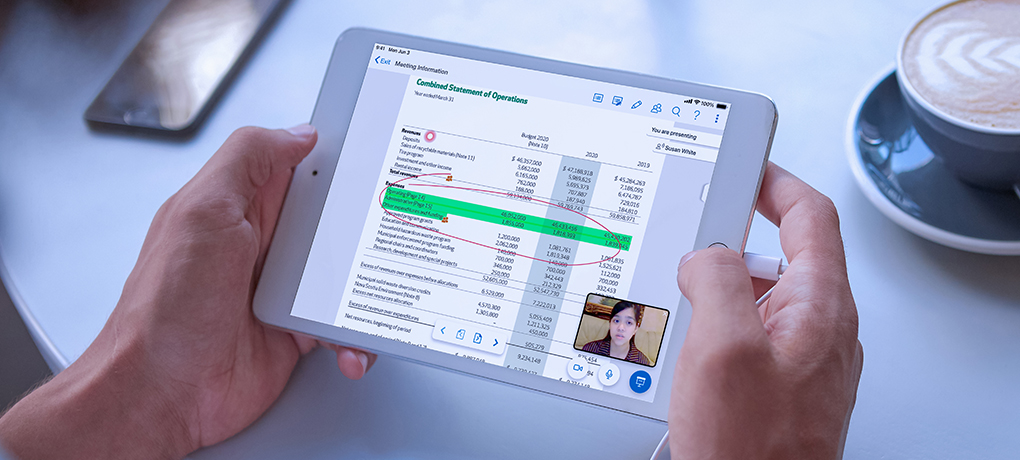Boards all over the world know how digital transformation can transform board governance. The pandemic accelerated the change from physical to digital in 2020. Boards had to conduct meetings, and other important board matters virtually. In 2021, the landscape of digital boardrooms is also expected to undergo significant changes.
Read about the major digital boardroom trends, so you can prepare your board to face this year head-on.
Increased Focus in Cybersecurity
Cybersecurity has become a significant concern for organizations, especially with the increased dependence on remote work.
Given this, boards have fallen victim to cybercriminals, taking advantage of the high dependence on virtual meeting platforms. Therefore, board members should consider this matter as a significant concern that needs to be discussed extensively.
The best way to address this digital issue is to implement effective corporate governance practices to protect confidential information and data effectively. In 2021, cybersecurity risk management sees an increase in integrating digital methods into various board processes. Thus, directors should consider being more aggressive in implementing new technology in disrupting any cyberthreats such as data breaches.
This 2021, here are adequate measures in increasing cybersecurity:
Providing cybersecurity training to heighten proficiency
There should be a certain level of knowledge among board members in terms of understanding, addressing, and possibly acting on cyberthreats in case the need to resolve security issues arise
Including cybersecurity strategies in boardroom agenda
Discussion of the best security models, such as adaptive security, and how these measures can improve cybersecurity should be part of board meeting discussions.
Adding board directors who have experience in cybersecurity
Including a member with a background in cybersecurity equips the board in handling cybersecurity issues and preparing cybersecurity strategies
Cybersecurity protocols should be more proactive rather than reactive. Similarly, following the abovementioned measures can more easily prevent any cyberattacks in your company. Whether an attack is as low-key as a social engineering attempt or as critical as taking advantage of cloud vulnerability, boards should be able to respond to them effectively and efficiently.
Enhanced Remote Meeting Experience
Virtual meetings have now become the norm for board meetings. As an effort to promote health and practice social distancing, boards have utilized video conferencing platforms. Holding meetings via video conference simulates the boardroom experience.
With the upsurge in demand for better digital board meetings, many companies set up collaborative efforts to ensure higher productivity and better engagement in online conferences.
For 2021, the following digital boardroom trends can change the virtual board meeting processes and requirements:
Continued dependence on remote meetings
There is no denying that there would still be continued dependence on remote meetings this 2021. Boards have become so accustomed to it that each board has probably created a set of best practices in conducting virtual board meetings. Despite when physical meetings have become much safer, board meetings will still allow virtual attendance.
The higher standard of professionalism
Ensuring effective communication is vital in holding successful board meetings. As such, board directors are likely to invest in quality cameras and microphones to ensure they can attend the meeting without hiccups.
Use of board portals
Board portals like Convene now provide video conferencing with seamless board pack access. Through using a board portal, boards can run effective meetings as good as being together in one boardroom. It allows councils to focus on making crucial decisions.
An enhanced and more digitized remote meeting experience equates directly to increased board engagement. Attending board meetings from the comfort of one’s home can be just as practical or even more effective than physical board meetings.
Increase Investment in Better Connectivity
As more board members work from home, most would rely on their fixed-line broadband. As some areas do not have an acceptably workable network coverage, boards need more options for better connectivity. This is where mobile broadband services come in.
Unfortunately, 4G services tend to be insufficient, especially in congested areas. This renders the virtual meeting experience unsatisfactory.
This 2021, 5G infrastructure would support the evolving technologies. Since this is a relatively new technology, regulators should create a whole new set of regulations in utilizing this all-important infrastructure upgrade in line with the digital transformation of the past year.
Furthermore, 5G is expected to be a critical element in effective virtual board meetings, among other technological trends. Because digital boardrooms need the proper connectivity for a compelling experience, 5G’s high bandwidth and low latency can help empower virtual communication from wherever a director is attending. As a result, the use of 5G will significantly increase exponentially as the telecommunications industry invests more in it in the future.
With the continued dependence on virtual board meetings in 2021, ensuring boards stay ahead of trends and challenges is of utmost importance. Elevating the digital boardroom experience should undoubtedly be a top priority for boards.
Be a proactive leader for your company and view Convene’s webinar on Going Digital in the Boardroom – Considerations and Challenges.
Watch the webinar to hear the insights and perspectives of experts worldwide on major digital boardroom trends in the future.
Darren is the Content Director at Convene. Driven by his passion for content writing and knowledge of digitalization, he takes pride in providing content that helps drive digital transformation. Over the years, he has written blogs related to digital meetings, board management, and modern governance.









